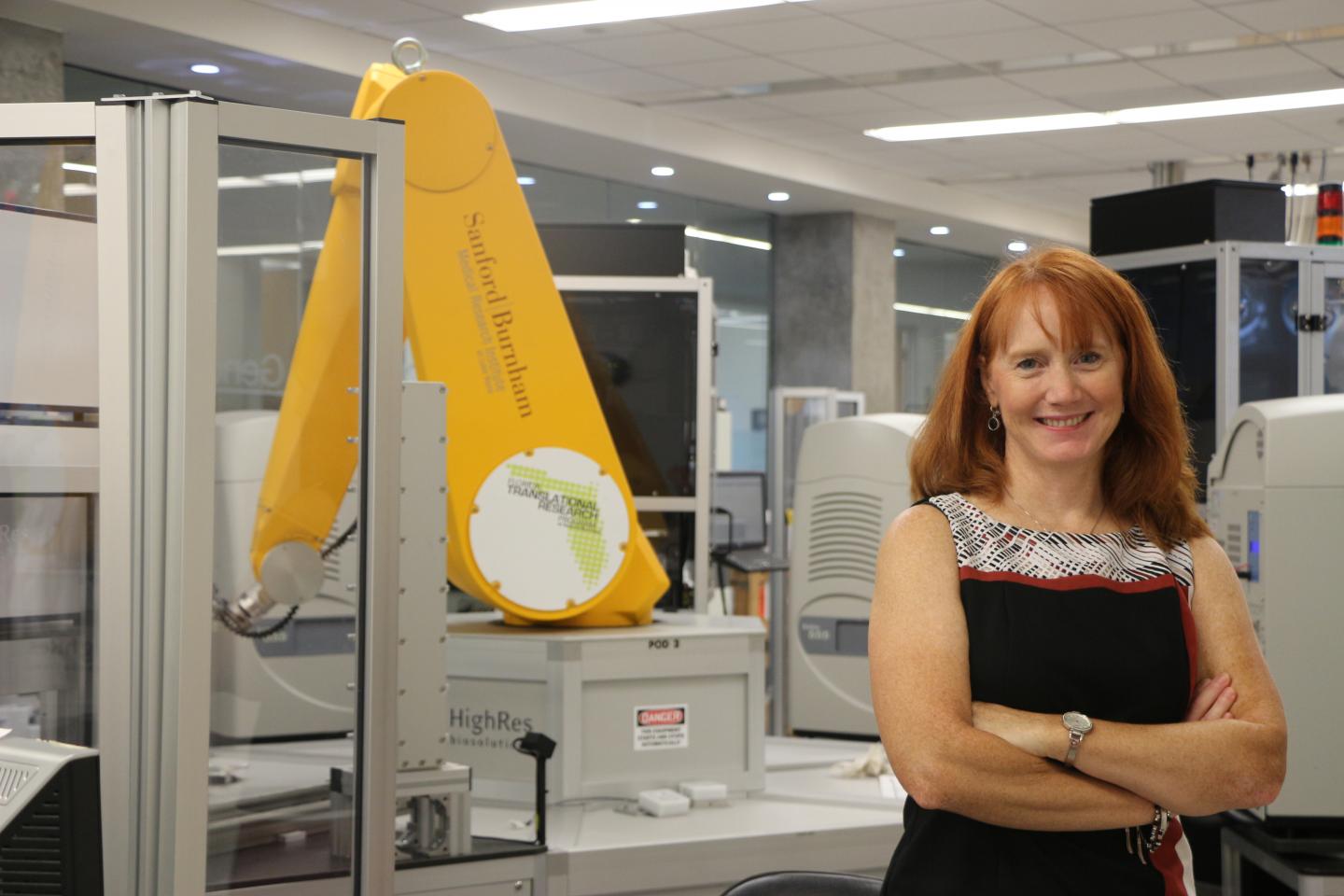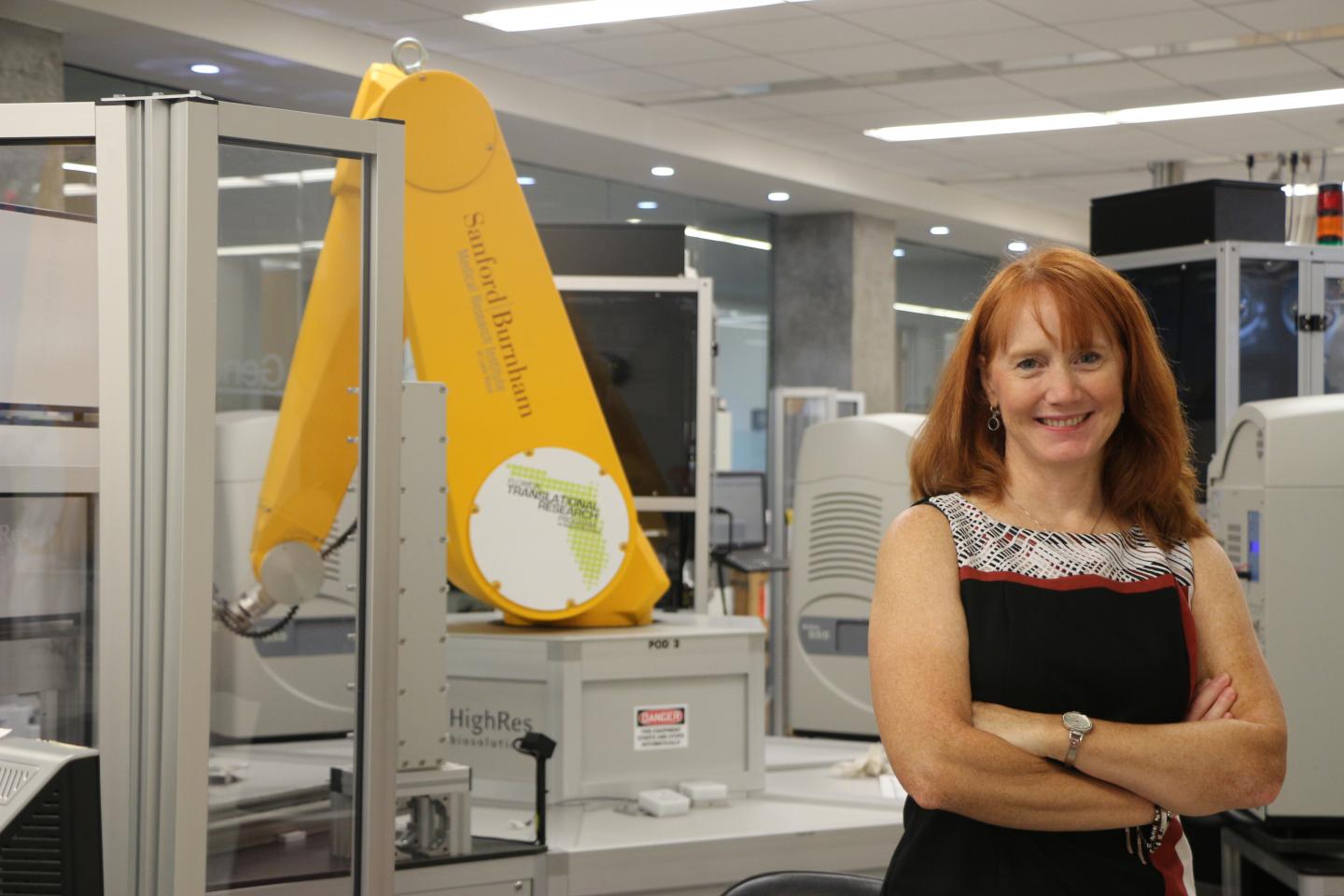
Credit: SBP
Orlando, FL, Aug. 10, 2017 - A team of researchers at Sanford Burnham Prebys Medical Discovery Institute (SBP) at Lake Nona, Fla. and Mayo Clinic in Rochester, Minnesota have been awarded a three-year National Institutes of Health (NIH) grant which aims to identify molecules that could become new medicines to inhibit myocardial fibrosis. Fibrosis is a major contributor to heart failure, for which there is no known cure.
The collaboration is being led by Siobhan Malany, Ph.D., director of Translational Biology, SBP, Sasantha Jeson Sangaralingham, Ph.D., assistant professor of Medicine, Mayo Clinic and John C. Burnett, M.D., Ph.D., professor of Medicine, Mayo Clinic and combines deep expertise in drug discovery, translational and clinical research. The SBP:Mayo collaborative model began in 2013 when an agreement was formed that recognized the organizations' combined strengths could expedite early-phase drug discovery and ultimately, the development of novel approaches to fight disease.
The grant, valued at $2 million over the next three years, will support research to identify, validate and refine chemical compounds that have the potential to influence the disease process using SBP's high throughput screening platform and to functionally evaluate the compounds in human cell lines at Mayo Clinic.
"This collaboration provides Mayo scientists with industrial-scale drug discovery technologies to accelerate their biological discoveries. Our research has the potential of markedly reducing the burden of human age-related fibrosis and diseases such as heart failure," said Malany.
Age-related organ fibrosis is a major cause for organ failure in humans and is accelerated in heart failure–the final stage of cardiovascular aging. Effective therapeutic options are relatively non-existent to treat pathological fibrosis and heart failure–a condition that affects nearly six million Americans and is the leading cause of hospitalization in people over the age of 65. Heart failure presents a major health-economic burden valued at $30 billion in the United States.
Related aging and heart failure studies have demonstrated that a deficiency of CNP, the pGC-B activator, resulted in elevated cardiac fibrosis and dysfunction, suggesting that enhancing the pGC-B receptor system represents an unprecedented therapeutic opportunity for fibrotic disease. To date, there are no small molecule drugs in existence to activate the pGC-B receptor. This grant, the second NIH award to the SBP:Mayo team, will allow them to extend their studies to identify molecular enhancers with anti-fibrotic properties.
The SBP:Mayo research is considered to be of high clinical impact as small molecule pGC-B enhancers, which currently do not exist, may have the potential of markedly reducing the burden of human age-related fibrosis and disease such as heart failure.
###
About SBP
Sanford Burnham Prebys Medical Discovery Institute (SBP) is an independent nonprofit medical research organization that conducts world-class, collaborative, biological research and translates its discoveries for the benefit of patients. SBP focuses its research on cancer, immunity, neurodegeneration, metabolic disorders and rare children's diseases. The Institute invests in talent, technology and partnerships to accelerate the translation of laboratory discoveries that will have the greatest impact on patients. Recognized for its world-class NCI-designated Cancer Center and the Conrad Prebys Center for Chemical Genomics, SBP employs about 1,100 scientists and staff in San Diego (La Jolla), Calif., and Orlando (Lake Nona), Fla. For more information, visit us at SBPdiscovery.org or on Facebook at facebook.com/SBPdiscovery and on Twitter @SBPdiscovery.
Media Contact
Deborah Robison
[email protected]
407-745-2073
@sbpdiscovery
http://www.sbpdiscovery.org/






